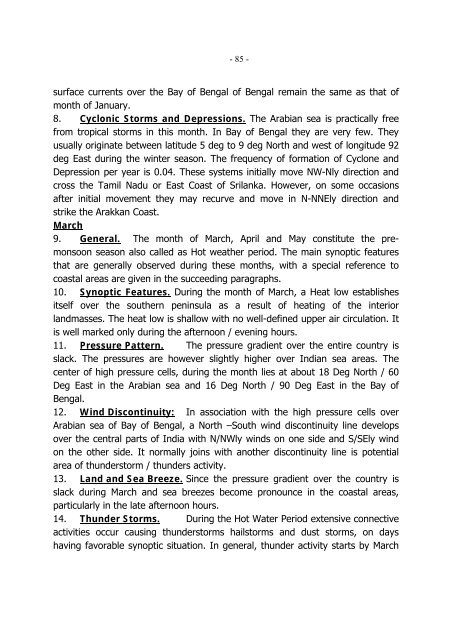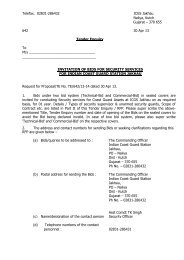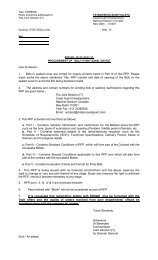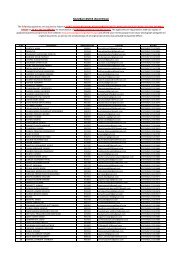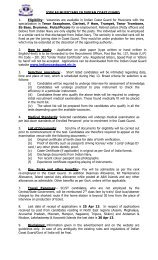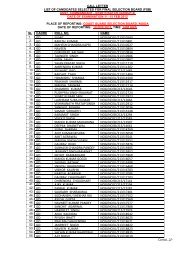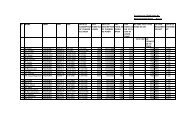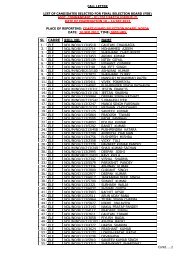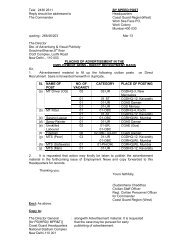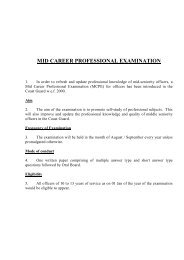eastern region oil spill disaster contingency plan - Indian Coast Guard
eastern region oil spill disaster contingency plan - Indian Coast Guard
eastern region oil spill disaster contingency plan - Indian Coast Guard
You also want an ePaper? Increase the reach of your titles
YUMPU automatically turns print PDFs into web optimized ePapers that Google loves.
- 85 -<br />
surface currents over the Bay of Bengal of Bengal remain the same as that of<br />
month of January.<br />
8. Cyclonic Storms and Depressions. The Arabian sea is practically free<br />
from tropical storms in this month. In Bay of Bengal they are very few. They<br />
usually originate between latitude 5 deg to 9 deg North and west of longitude 92<br />
deg East during the winter season. The frequency of formation of Cyclone and<br />
Depression per year is 0.04. These systems initially move NW-Nly direction and<br />
cross the Tamil Nadu or East <strong>Coast</strong> of Srilanka. However, on some occasions<br />
after initial movement they may recurve and move in N-NNEly direction and<br />
strike the Arakkan <strong>Coast</strong>.<br />
March<br />
9. General. The month of March, April and May constitute the premonsoon<br />
season also called as Hot weather period. The main synoptic features<br />
that are generally observed during these months, with a special reference to<br />
coastal areas are given in the succeeding paragraphs.<br />
10. Synoptic Features. During the month of March, a Heat low establishes<br />
itself over the southern peninsula as a result of heating of the interior<br />
landmasses. The heat low is shallow with no well-defined upper air circulation. It<br />
is well marked only during the afternoon / evening hours.<br />
11. Pressure Pattern. The pressure gradient over the entire country is<br />
slack. The pressures are however slightly higher over <strong>Indian</strong> sea areas. The<br />
center of high pressure cells, during the month lies at about 18 Deg North / 60<br />
Deg East in the Arabian sea and 16 Deg North / 90 Deg East in the Bay of<br />
Bengal.<br />
12. Wind Discontinuity: In association with the high pressure cells over<br />
Arabian sea of Bay of Bengal, a North –South wind discontinuity line develops<br />
over the central parts of India with N/NWly winds on one side and S/SEly wind<br />
on the other side. It normally joins with another discontinuity line is potential<br />
area of thunderstorm / thunders activity.<br />
13. Land and Sea Breeze. Since the pressure gradient over the country is<br />
slack during March and sea breezes become pronounce in the coastal areas,<br />
particularly in the late afternoon hours.<br />
14. Thunder Storms. During the Hot Water Period extensive connective<br />
activities occur causing thunderstorms hailstorms and dust storms, on days<br />
having favorable synoptic situation. In general, thunder activity starts by March


